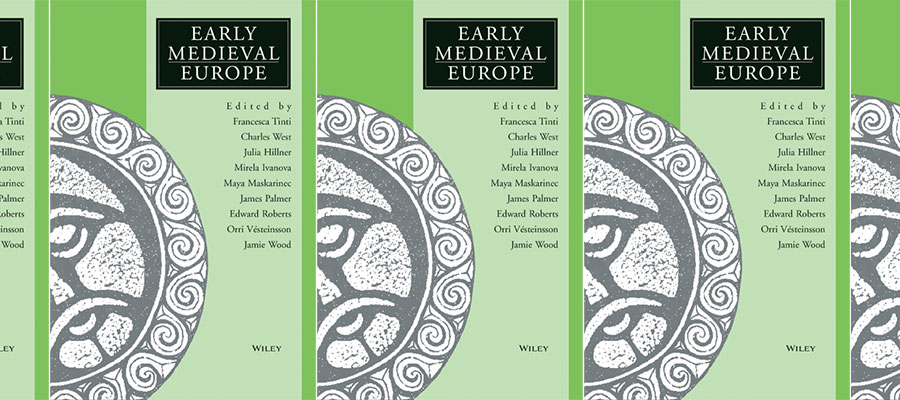Early Medieval Europe, volume 31, issue 3 (August 2023). Special issue: Mobility and Migration in the Early medieval Mediterranean [Open Access]
CONTENTS INCLUDE
Introduction: Mobility and migration in the early medieval Mediterranean
Claudia Rapp
Mobility and migration in Byzantium: who gets to tell the story?
Claudia Rapp
This article underlines the importance of approaching written sources for what they are: authorial constructs. This is true also for depictions of mobility and migration. Byzantine authors instrumentalized these for their own purposes beyond the event at hand. Authorial focus, along with the requirements of the chosen literary genre, is also the reason for the different scales of actors that appear in these texts, whether large blurry masses of nameless people, smaller groups with a distinct profile, or finely drawn individuals.
Qualifying Mediterranean connectivity: Byzantium and the Franks during the seventh century
Mischa Meier and Steffen Patzold
In the last two decades, historians researching the seventh century ce have increasingly emphasized mobility, communications and connectivity across the Mediterranean world that supposedly included close contacts between the Franks and Byzantium. These studies, however, rely often on optimistic, maximum interpretations of the comparatively sparse source base, and have not always precisely distinguished between different forms of mobility and connectivity. This article argues that a closer examination of the actual cultural and political consequences of mobility and contact between Byzantium and Gaul is required, and that the possibility of discontinuity and disintegration should not be disregarded. In our reading of the sources, we deliberately adopt a sceptical, methodologically cautious minimal position: the textual sources can be interpreted as showing that, while individual, sporadic contacts across the Mediterranean continued to exist, there was no established, continuous practice of communications between Byzantium and Gaul.
Mobility in seventh-century Byzantium: analysing Emperor Heraclius’ political ideology and propaganda
Paraskevi Sykopetritou
This paper aims to shed light on the mobility of people and relics in the seventh century. It will show that Emperor Heraclius strategically designed his movements and those of his household, citizens, and officials, as well as those of relics within and beyond the borders of Byzantium, in order to consolidate the empire and his position in it. These movements also allowed Heraclius to associate himself effectively with Old Testament, antique, and Byzantine exemplary models of leadership. Overall, this look at mobility in terms of political ideology and propaganda provides a more nuanced understanding of imperial leadership in seventh-century Byzantium.
In enemy hands: the Byzantine experience of captivity between the seventh and tenth centuries
Grigori Simeonov
The present paper deals with forced migration experienced by subjects of the Byzantine Empire captured by foreign enemies in the context of warfare between the seventh and the tenth centuries. The focus of the first part is on the scenarios faced by individuals and groups when an enemy had taken control of a settlement or a larger territory. The second part discusses aspects of the role social status and gender played in the process of being taken over and then (possibly but not necessarily) held in captivity. Although one can trace similarities in the way captors treated their captives on different occasions, an overgeneralizing approach can prove misleading, distracting us from the dynamics of the consequences that war and abduction had on both the agency of the victor and the fate of the loser in the early Middle Ages.
Saints’ mobility and confinement: deconstructing Byzantine stories of (fe)male ascetics and monastics
Christodoulos Papavarnavas
This article investigates stories of holiness which have ascetics or monastics as their hero(in)es and which develop based on a careful interlocking of two concepts: wanderings in urban or desert environments and self-confinement in enclosed or secluded spaces. Through a close reading of two saints’ Lives (i.e., the Life of Mary of Egypt and the Life of Matrona of Perge) dating to the early and middle Byzantine periods, the present analysis uncovers the tripartite relationship between movement, confinement, and spiritual advancement from a literary-narrative point of view, thus deepening our understanding of asceticism and monasticism in Byzantine contexts.
